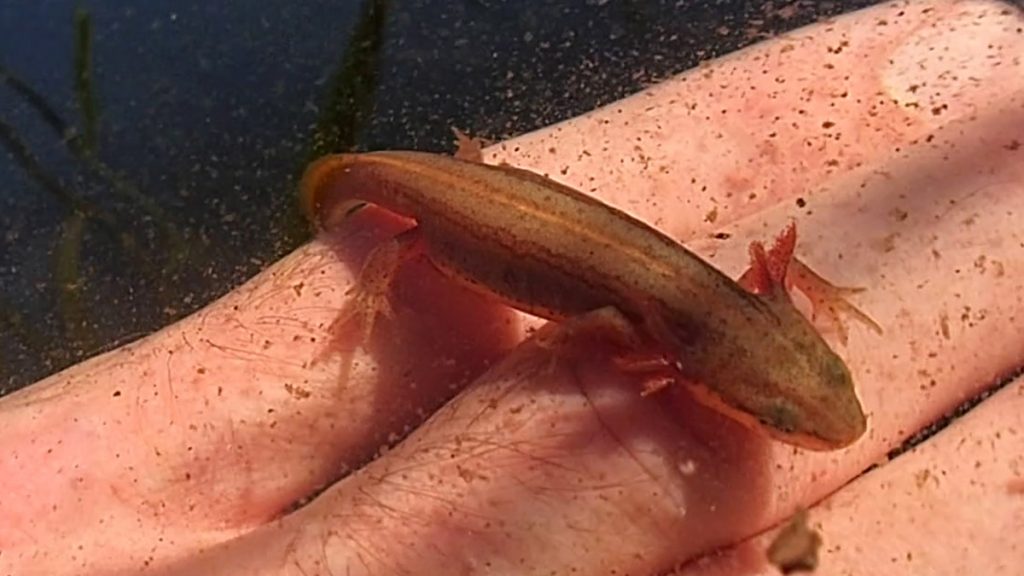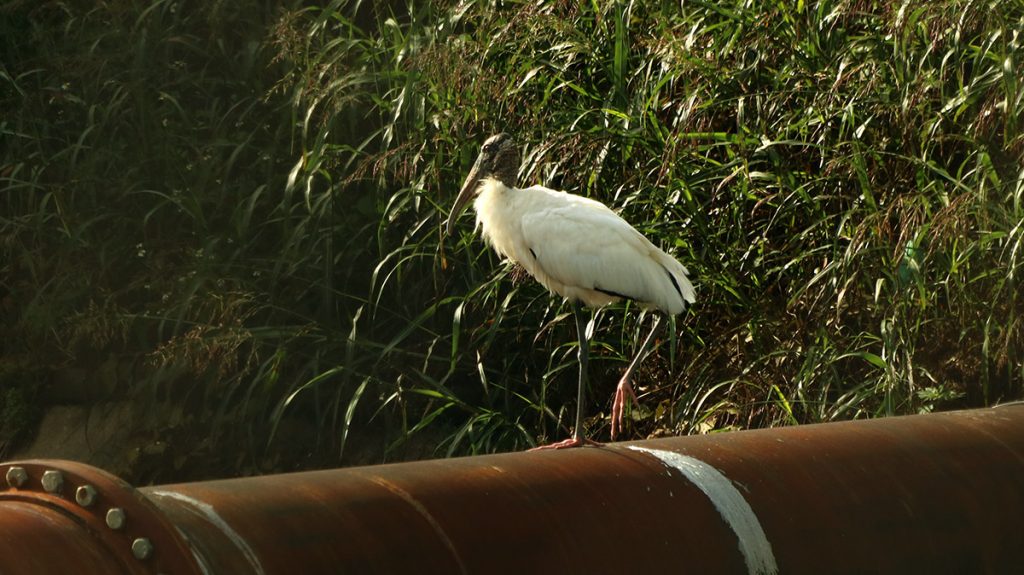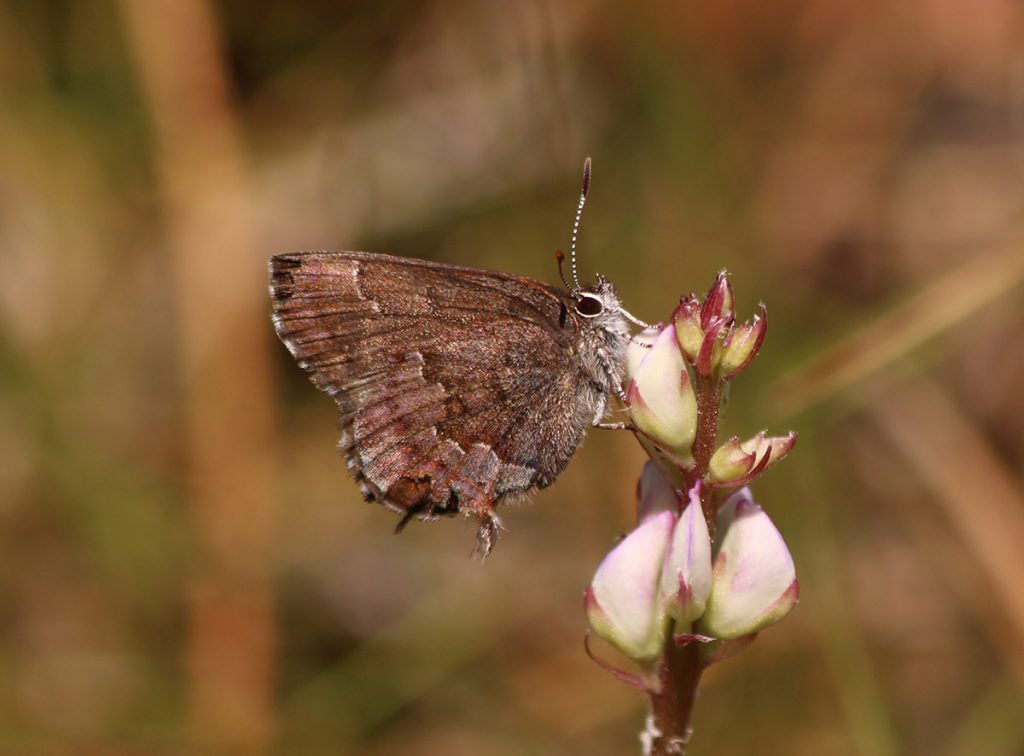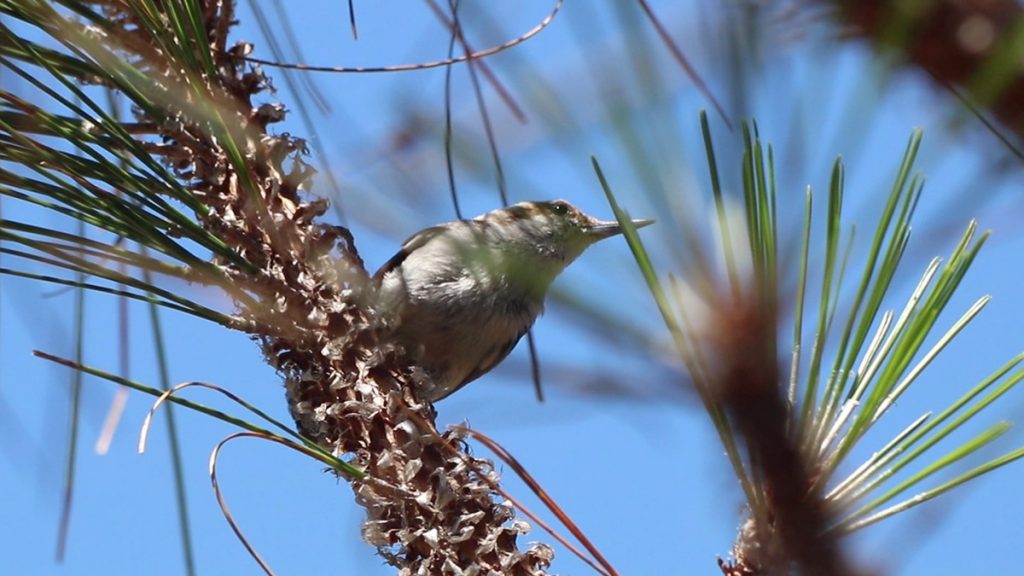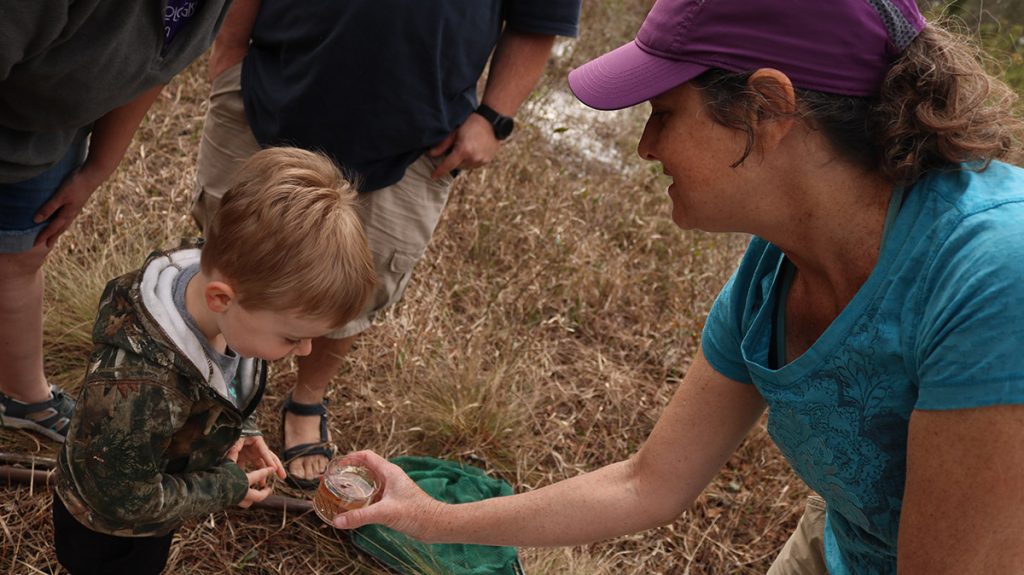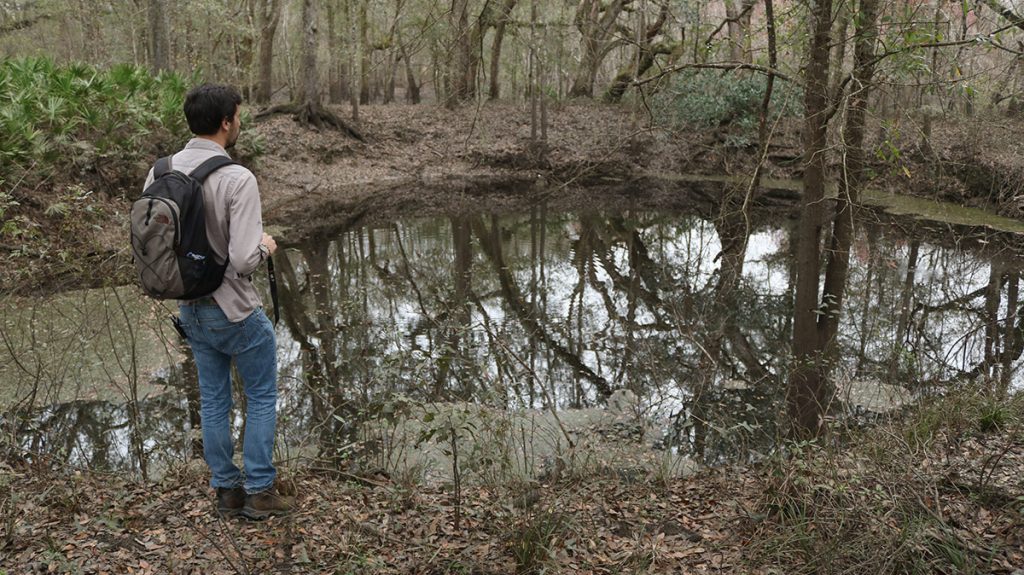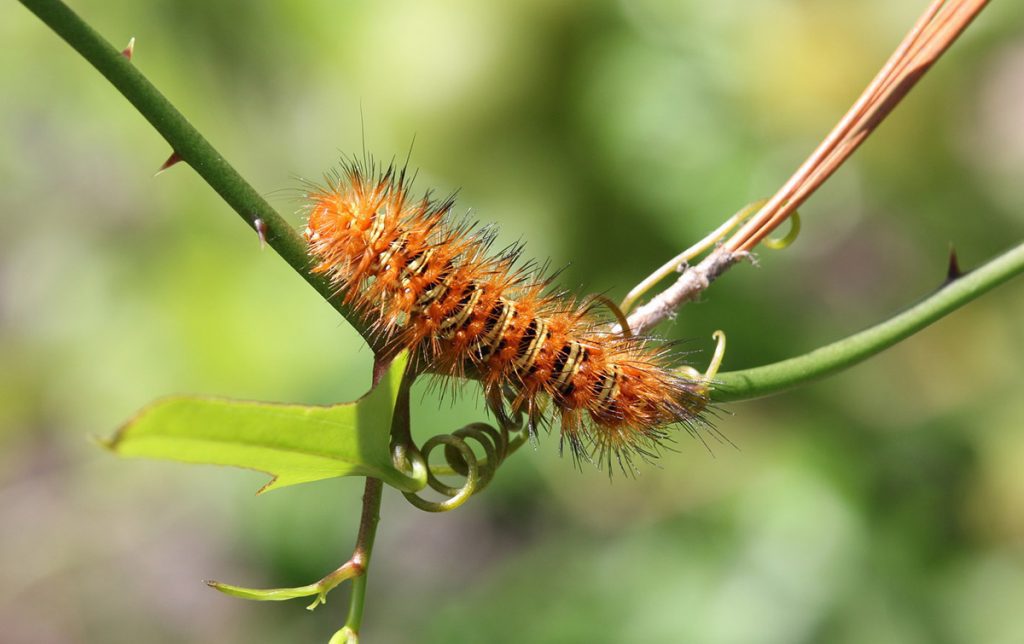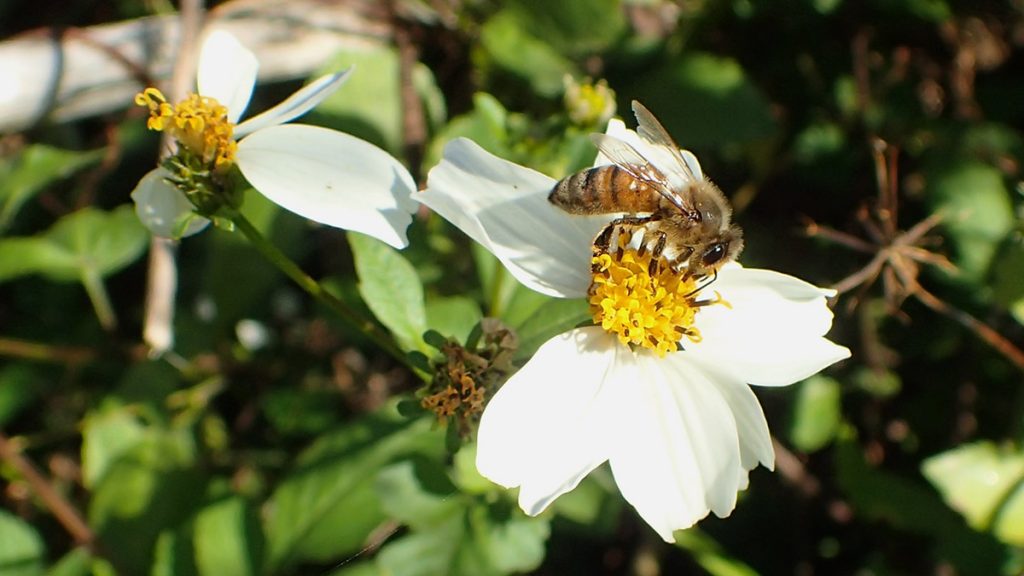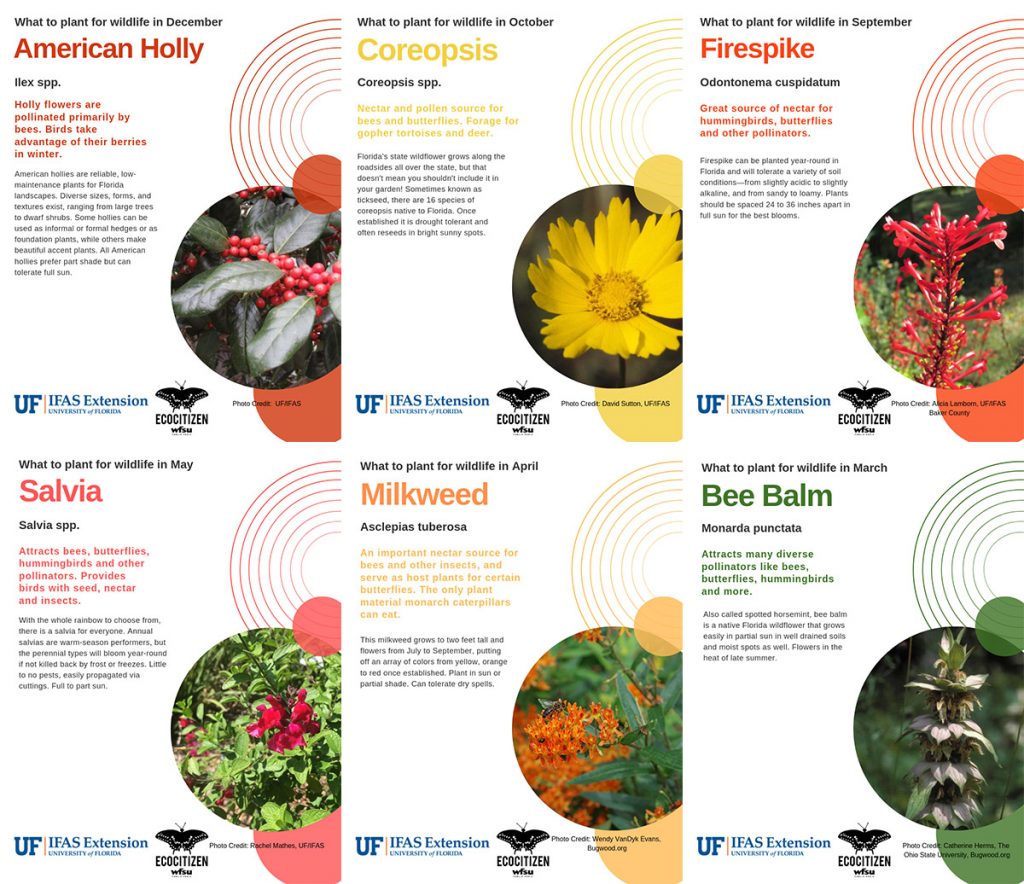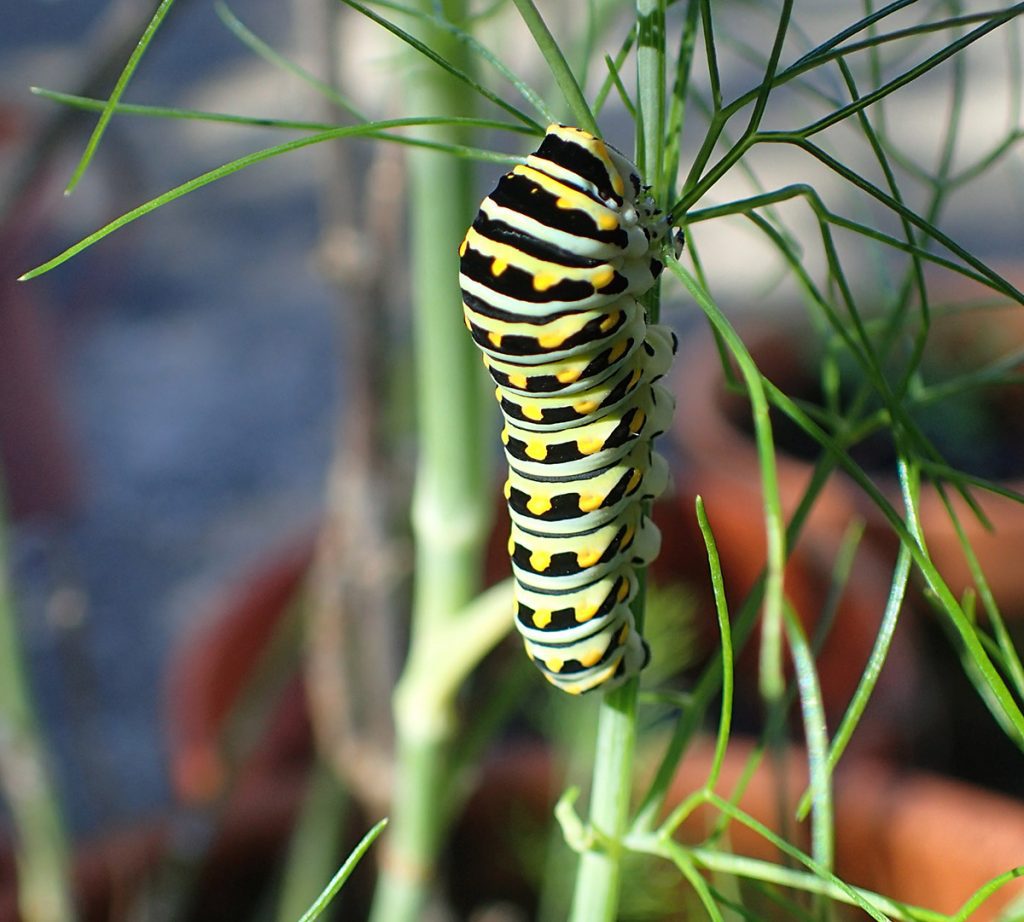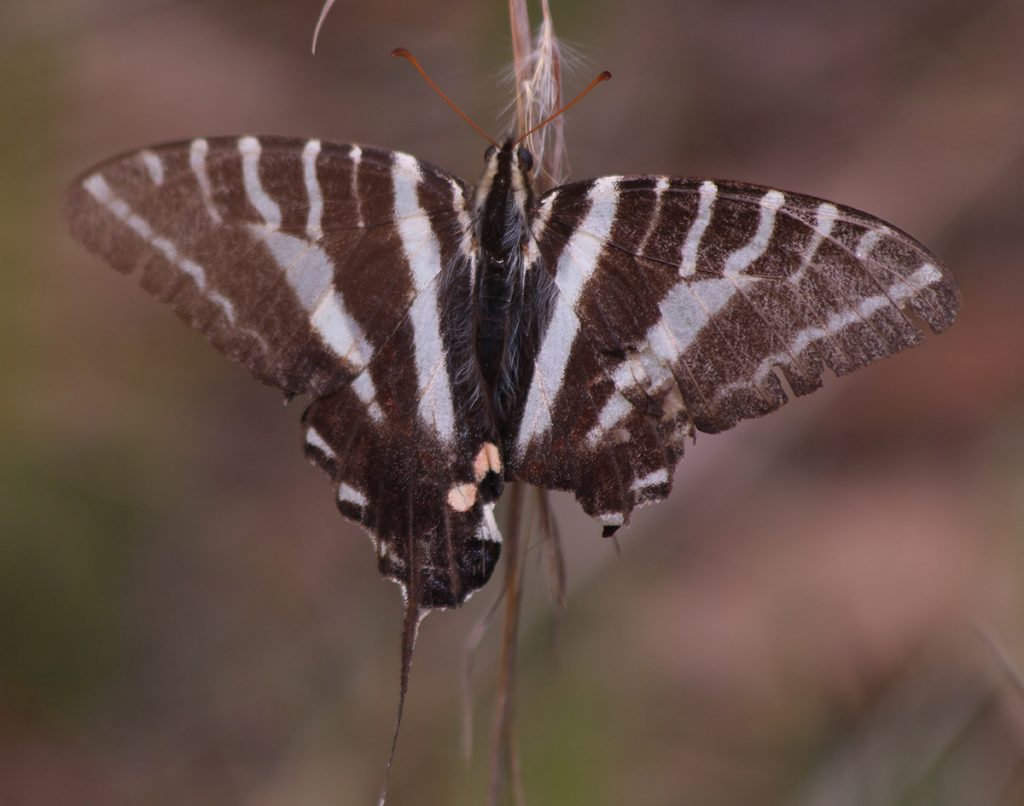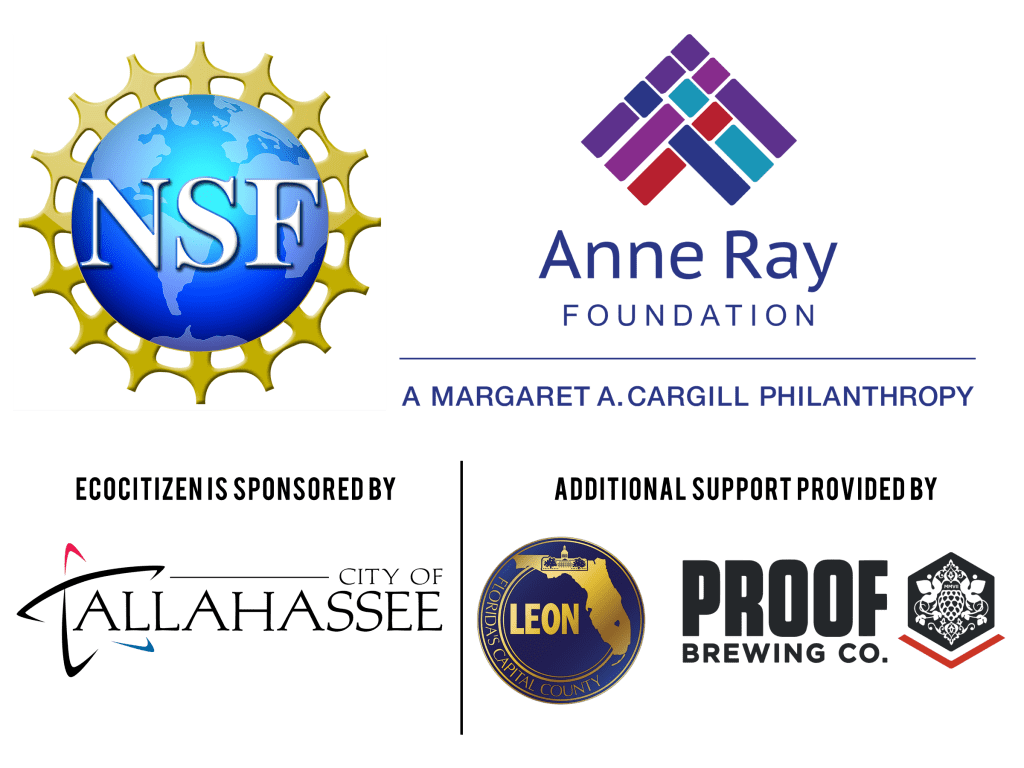Watch almost a year of seasonal change in two Tallahassee locations: Lake Elberta, an urban park, and in the Munson Sandhills Region of the Apalachicola National Forest.
EcoCitizen was made possible by a grant from PBS Nature, and is sponsored by the City of Tallahassee. Additional support has been provided by Leon County and Proof Brewing Company. EcoCitizen Day is a part of the Florida Fish and Wildlife Conservation Commission’s Tallahassee/ Leon County City Nature Challenge.
Subscribe to the WFSU Ecology Blog to receive more videos and articles about our local, natural areas, and subscribe to the WFSU Ecology Youtube Channel.
Rob Diaz de Villegas WFSU Public Media
Just four short months ago- and it feels like much longer to me- we kicked off the EcoCitizen Project. Our goal was to get people more hands-on with nature. It’s one thing for me to tell you about a place you might visit, or maybe about a remote place that is cool, but too adventurous for most. We wanted people to get their hands dirty in a (mostly) literal sense. This is how:
- Recognize Seasonality in Nature. You don’t have to get your hands dirty to do this, but we’re talking about more actively noticing what plants, animals, and waterways do when it hot or cold, wet or dry.
- Engage in Citizen Science. Ordinary people help professional scientists collect data. Sometimes that means down and dirty field work. Other times it means counting plants or animals without touching them. Either way, it’s a way of actively engaging with nature. You’re helping to further our understanding of the natural world, and you’re going notice much more about our seasonal cycles.
- Make Your Yard a Refuge for Wildlife. This is the easiest way to help wildlife- give it a space to be. Dedicate space to native plants, which get eaten by native insects. Those in turn feed birds and other small animals. Once this life is in your yard, there are citizen science programs you can use to monitor them, and help researchers better understand them. And you’ll start witnessing seasonal change in your own yard.
The show above represents the completion of the first phase of the EcoCitizen Project. There’s still a lot to explore in each of these topics, and the EcoCitizen way of thinking will permeate many of our explorations of our area.
The EcoCitizen Show | Seasonality in Our Own Backyard
The show takes some of the content we’ve produced for this project and reorganized it by season. You’ll find that we focused on two locations- Lake Elberta and the Munson Sandhills. This leaves out quite a few of the segments we produced for EcoCitizen, but it allowed us to dig a little deeper into these places. And also, quite a few things have happened since we released some of our videos. The winter migratory birds have gone north, and now we see visitors from South America. And a lot of birds started nesting and having chicks.
It’s been nearly a year since we started shooting for this project, and so we see almost a year of seasonal change in these two locations. Seasonality, or phenology to use the scientific term, has always been a part of this blog. But while we might do a story on seasonally booming wildflowers like dimpled trout lilies or Chapman’s rhododendrons, we don’t always go back to Wolf Creek or the St. Joe State Buffer Preserve to see what happens after they lose their blooms and other flowers emerge.
And these are two great locations to witness seasonal change. Lake Elberta is an urban park, a retention pond that for some reason is beloved by migratory birds and wood storks. The Munsons Sandhills are a region of the Apalachicola National Forest located just south of Capital Circle in Tallahassee. It’s part of a forest of over a half-a-million acres, running from here to the Apalachicola River. And yet it’s only a twenty minute bike ride from Lake Elberta.
Below is an overview of this project with links to the original stories.
1. Recognizing Seasonality in Nature
The Striped Newt Repatriation Project
The short video we link to here shows two different spots in the show. We see two times the Coastal Plains Institute releases newts, once in the summer of 2018, and once in January of 2019. Ryan and Rebecca Means prefer to release adult newts in January- this is when they head down to ephemeral wetlands to breed. But January 2018 was dry, and only in June did they have enough rain for a release. At this time of year, they don’t want to release egg bearing females, so they released older larvae.
This was a lucky year for us to shoot video in the Munson Sandhills. As we see in the show, Rebecca mentions that wetlands fill and empty based on wet and dry cycles throughout the year. But they’re directly connected to the aquifer, which is less affected by a single storm than by how much it rains over several months. And 2018 was a dry year. In January, we see how a fall full of rain has flooded the wetlands more than they’ve been in years. Within a few months we see the driest dry and wettest wet. It was a remarkable year, and a good one to learn the nature of ephemeral wetlands.
The Seasonality of Birds in Lake Elberta
At Lake Elberta Park, we meet Peter Kleinhenz of the Florida Fish and Wildlife Conservation Commission. He also happens to be the President of the Apalachee Audubon Society. We’ll get to his Audubon Action grant for Lake Elberta below. The reason Peter wanted to write a grant for this park, aside from its location by several lower income neighborhoods, is that it was already an unlikely birding hotspot.
In the original segment, we see how waves of ducks come and go throughout the winter. And the in that blog post, linked above, we can see how citizen scientists using eBird have charted when each species has arrived year after year. We end that segment with the Walker Ford Community Center kids help Apalachee Audubon erect a pole with several purple martin nesting gourds.
In the show, we see how these neotropical migrants have taken to the gourds. By EcoCitizen Day, April 27, about a month after they first showed up, we see birds fighting over space on the structure (23:20 in the video). And Peter was told to not be hopeful in the first year the gourds were up.
Also 21:52 in the show, we see a male (brighter) and female (less bright) bluebird by a bluebird nesting box. This was also installed by Apalachee Audubon over the winter.
By late April, all of the bufflehead, scaup, and redhead ducks have flown north. But at 22:57, we see how wood ducks -year round residents- and geese have had ducklings and goslings at Lake Elberta.
Frosted Elfin in the Munson Sandhills
I could have listed this under the citizen science heading as well. But this is such a great seasonal story. The frosted elfin is one of the first butterflies to fly in our area. They emerge from chrysalides in the ground in February. They then breed- only once a year- and lay eggs on sundial lupine. BY mid-May, their caterpillars have done eating the plant and make chrysalides in which they pupate until the following February.
The sundial lupine plants grow in the longleaf pine ecosystem. Without fire, they’d be crowded out by oaks, and the frosted elfin wouldn’t have any larval food. In the video, we see what happens when fire swept through a lupine patch before the elfin caterpillars were off the plants. This is, incidentally, the same fire that sweeps through Ryan and Rebecca’s wetlands in the striped newt piece.
Studying these butterflies are our favorite lepidopterists, Dean and Sally Jue.
Nesting Brown-Headed Nuthatches
This is a segment I’ve been trying to do with Tall Timbers Research Station and Land Conservancy for a couple of years, but my schedule hasn’t worked out. Luckily, on EcoCitizen Day, we had Tall Timbers’ new red cockaded woodpecker specialist, Rob Meyer, on hand to help people ID birds.
The striped newt pond where CPI set up for the event just happened to be by a brown-headed nuthatch nest. They like dead trunks about the size of an average adult male, or a little taller. You see how sharp their little beaks are. Rob painted a picture of a bird that weighs less than four-tenths of an ounce attacking dead wood to make a cavity. This is handy for other cavity nesting birds, notably eastern bluebirds, who have less sharp beaks.
Brown-headed nuthatches are one of three bird species endemic to longleaf forests, along with Bachman’s sparrows and red cockaded woodpeckers (RCWs). Like RCWs, they are cooperative breeders. This means that siblings help their parents raise new chicks. This is a brief moment in our show (starting at 21:59), but I’d love to get more in depth wit this bird.
2. Engaging in Citizen Science
The Adopt an Ephemeral Wetland Program
The Coastal Plains Institute relies on Citizen Scientists to monitor their striped newt wetlands. They can’t let newts or other animals sit in drift fence traps for too long; someone needs to check the traps every day. And CPI is a two person operation. So ordinary citizens can help professional researchers by checking the traps, and logging what they find.
But only three of the Munson Sandhills’ over 150 wetlands have have drift fences. And Ryan and Rebecca want to see how the other amphibians who rely on these specialized wetlands are doing. I’ve written about this program before, and we see the wetland my family and two others adopted at 1:37. The first is an image is our wetland in February of 2017, the first time we visited it. The second is June of 2018, after months during which program participants couldn’t sample their wetlands.
In the linked post above, you can see just how flooded our wetland was in February of this year. In that video, and in the show, we meet a family new to the program. We also see that amphibians aren’t the only things swimming in ephemeral wetlands.
iNaturalist
For the sake of narrative clarity, I left everything having to do with iNaturalist out of the EcoCitizen special. This app was central to our EcoCitizen Day event, which was a part of the City Nature Challenge. The City Nature Challenge was an international competition to see who could make the most wildlife observations on iNaturalist over a four day period.
iNaturalist is part game, part education tool, and part citizen science tool. Basically, you take photos of every living thing you see in nature- or your yard, or growing out of the crack in a sidewalk. The app gives you suggestions of what it might be, and, over time, other users verify your guess. Depending on what you find and where, this raw data could be used in one of the many research projects created on iNaturalist. Or you could create your own project and conduct your own research (it could be as simple as an inventory of the plants and animals in your yard).
L. Kirk Edwards WEA in Tallahassee
Our EcoCitizen Day partner, Florida Fish and Wildlife, hosted a City Nature Challenge Event here. So Peter Kleinhenz took us out to give viewers a tutorial in how to use iNaturalist. This Wildlife and Environmental Area is an unknown Tallahassee treasure, and a great place to play with the app.
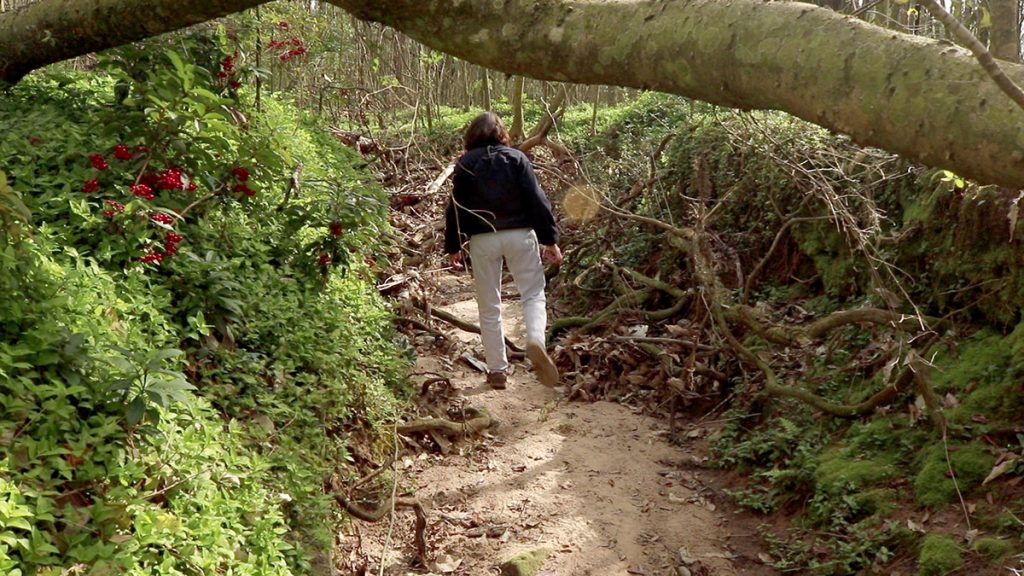
Walking in a drainage creek on Florida A&M campus. Note the red berries of the coral aridisa (Ardisia crenata) plant.
FAMU BioBlitz
iNaturalist can be fun and educational. By fun, I mean addictive. I’ve taken my phone out so often to snap photos of some caterpillar of tiny wildflower that my kids will ask me to do it whenever some strange bug flies by (and I happily oblige). But iNaturalist has practical uses as well. During an unexpectedly rugged adventure on the Florida A&M University campus, we discovered a forest of invasive species. If you’re a land manager or volunteer organization, iNaturalist could be a useful tool, a way to map invasives you want to remove.
City Nature Challenge Results!
With EcoCitizen Day as a main event, the first Tallahassee/ Leon County City Nature Challenge was a huge success. EcoCitizen Day funneled people to Lake Elberta and the Munson Sandhills to make observations for the reasons you see in the show above- there’s lots of wildlife to see there! In addition, our local Challenge organizer, FWC, hosted events at L. Kirk Edwards, Elinor Klapp Phipps Park with Dean and Sally Jue, San Luis Mission Park, and kayak bioblitz of Lower lake Lafayette.
After they separated the results by population, Tallahassee was the champion among cities with 100,000-250,000 people. And I know well do much better next year.
Browse Citizen Science Programs
We put together this page describing citizen science programs featured in the EcoCitizen Project and on PBS Nature’s American Spring LIVE, which provided funding for EcoCitizen. We’ll likely add more over time, after all, there are so many ways to get involved. My favorite thing about participating in citizen science is that, not only do you advance knowledge of the natural world, you end up learning a ton.
3. Making Your Home a Refuge for Wildlife
Making Lake Elberta a Florida Friendly Landscape
Peter Kleinhenz wrote an Audubon Action grant to make Lake Elberta better for birds and for people. Purple Martin and Bluebird houses directly benefit some colorful birds. The other work Peter and his interns and volunteers put in was for the benefit of insects. Birds appreciate the seeds in your feeder, but those are snacks. Many birds eat insects. Insects eat or gather nectar from native plants.
At the end of the show, we see how the wildflowers they planted had bloomed. And blueberry bushes planted on Arbor Day produced a lot of berries for us and the birds (as any gardener knows, we have to pick them quickly after they ripen or we won’t get to eat them).
Florida Friendly Seasonal Planting Guide
This incredible resource was created for the EcoCitizen Project by the Leon County IFAS Extension. Rachel Mathes, the Horticulture Program Assistant at our Extension Office, designed at least two graphics for each month depicting the appropriate plant to start in that time of year. A big thank you to Rachel and Mark Tancig, Leon County’s Extension Agent. This is a great resource for anyone looking to create a habitat in their yard.
 Raising Butterflies in North Florida
Raising Butterflies in North Florida
One of my favorite ways to invite wildlife into my yard is to feed caterpillars. In this article, we talk about what it takes to raise four different species of butterfly caterpillars. It starts with their larval food- what their caterpillars eat. Each species has specific plants on which they host. If you look at the planting guide above, you’ll see that many of the species I mention in this butterfly post are represented.
Of course, one of the most popular species to raise is the monarch. With that in mind, I headed down to the St. Marks Refuge to talk to the folks at the Monarch-Milkweed Initiative. Not only did they have tips for raising milkweed from seed, but we got an incredible education in the ecology of various milkweed species. This includes aquatic milkweed (Asclepias perennis), the only native species not to lose its leaves in the winter. This means early migrating monarchs (or the growing year-round population) first fly to wetland areas where this grows to lay their eggs.
At this time of year, Refuge Ranger Scott Davis says that sandhills milkweed (Asclepias humistrata) is of vital importance. This is the species they were planting when I went down in February. The only place I’ve ever encountered it in the wild (including one of my City Nature Challenge observations) is in the Munson Sandhills. In fact, the first time I ever saw it was while filming my first striped newt video back in 2016.
And that’s seems like a good place to wrap up, having completed the circle back in the forest. My hope is that somewhere in these stories, you find the inspiration to plant some seeds, or explore citizen science programs. And I hope you share your inspiration with us. How are you all engaging with nature?
Funding for EcoCitizen was provided by…
WFSU EcoCitizen is funded by Nature, a production of THIRTEEN PRODUCTIONS LLC for WNET and PBS. American Spring LIVE is a production of Berman Productions, Inc. and THIRTEEN PRODUCTIONS LLC for WNET.
Major support for Nature: American Spring LIVE was provided by the National Science Foundation and Anne Ray Foundation.
Additional financial support was provided by the Arnhold Family in memory of Henry and Clarisse Arnhold, Sue and Edgar Wachenheim III, the Kate W. Cassidy Foundation, the Lillian Goldman Charitable Trust, Kathy Chiao and Ken Hao, the Anderson Family Fund, the Filomen M. D’Agostino Foundation, Rosalind P. Walter, the Halmi Family in memory of Robert Halmi, Sr., Sandra Atlas Bass, Doris R. and Robert J. Thomas, Charles Rosenblum, by the Corporation for Public Broadcasting, and by the nation’s public television stations.
This material is based upon work supported by the National Science Foundation under Grant No. 1811511. Any
opinions, findings and conclusions or recommendations expressed in this material are those of the authors and
do not necessarily reflect the views of the National Science Foundation.

